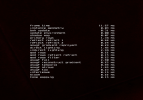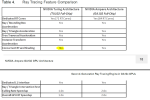D
Deleted member 2197
Guest
From the above Hitman 3 review; it seems to occur randomly.What performance bug are people encountering here with DLSS exactly? I am not sure if I have "had that" yet?
Now as we said in our previous article, we encountered a DLSS glitch/bug which resulted in really low performance. We were able to replicate this by enabling/disabling Ray Tracing (and without making any changes at all to DLSS). This issue appears randomly, so we don’t know what is really causing it. Still, and if you ever experience it, you can fix it by disabling and then re-enabling DLSS.






